
Shamere McKenzie (Narrative 2)
There are an estimated 403,000 people living in modern slavery in the United States (GSI 2018). Sex trafficking exists throughout the country. Traffickers use violence, threats, lies, debt bondage and other forms of coercion to compel adults and children to engage in commercial sex acts against their will. The situations that sex trafficking victims face vary, many victims become romantically involved with someone who then forces them into prostitution. Others are lured with false promises of a job, and some are forced to sell sex by members of their own families. Victims of sex trafficking include both foreign nationals and US citizens, with women making up the majority of those trafficked for the purposes of commercial sexual exploitation. In 2015, the most reported venues/industries for sex trafficking included commercial-front brothels, hotel/motel-based trafficking, online advertisements with unknown locations, residential brothels, and street-based sex trafficking. Shamere McKenzie came to the US from Jamaica when she was 6 years old. A talented track star, she was running at college level when she injured her hamstring. With her scholarship in jeopardy, she met someone who said they could help her return to school, all she had to do was dance at his nightclub. One evening, however, Shamere was taken to a house in Brooklyn where she was told to have sex with a customer. When she refused, her trafficker threatened her life, and when she tried to leave when they returned home he beat her to unconsciousness. For eighteen months Shamere McKenzie was forced in to prostitution and trafficked across five different states under constant threats of violence. She finally escaped when her trafficker allowed her to call her mother and she was able to get a flight back to New York.
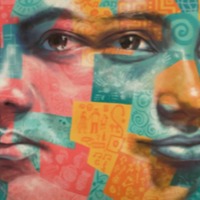
Chepkorir
There are an estimated 328,000 people living in conditions of slavery in Kenya (GSI 2018). While Kenya has committed to eliminate child, early and forced marriage by 2030 in line with target 5.3 of the UN Sustainable Development Goals, 23% of Kenyan girls are still married before their 18th birthday. According to UNICEF, Kenya has the 20th highest absolute number of child brides in the world. Forced child marriage is driven by gender inequality with the belief that girls are inferior to boys. It is exacerbated by poverty, natural disasters and cultural traditions such as female genital mutilation and Samburu whereby a close family relative will approach a girl’s parents with red Samburu beads and place the necklace around the girl’s neck as a form of engagement. Chepkorir was forced to work tending her father’s cattle from a young age, preventing her from receiving any education. When she was 10 years old, Chepkorir’s father arranged her marriage to a 76 year old man. She ran away and found refuge in a church who put her in contact with HAART Kenya. At HAART’s shelter, Chepkorir was able to get an education and secure employment. The COVID-19 outbreak has however led to the postponement of her employment.
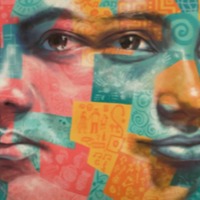
Bilal
There are an estimated 90,000 people living in modern slavey in Mauritania (GSI 2018). Mauritania is one of the last countries in the world where people are still born into hereditary slavery, which means they are literally owned by other people, and forced to work for masters their entire lives. People in slavery come from the Haratine ethnic group, historically enslaved by White Moors. They can be bought and sold, or given as gifts, and face a lifetime of exploitation and abuse. Rape of female slaves is common and their children also become slaves. They are Muslims, and many believe that it is Allah’s wish for them to be enslaved because they are told that their paradise is bound to their Master. In reality, Islam dictates that a Muslim cannot enslave a fellow Muslim. Since 2007 slavery has been criminalised in Mauritania but the law is not enforced and the government is reluctant to acknowledge the existence of the problem. Born in 1955, Bîlal Ould Semetta was enslaved in inherited bondage throughout his childhood until he was 25 years old. At a young age he was sent to work for the cousin of the family to whom he was enslaved. He lived as a shepherd, cut off from his family, refused an education and banned from practising religion. It was not until the drought of 1973 that Bîlal was no longer needed and was allowed to return to his family.
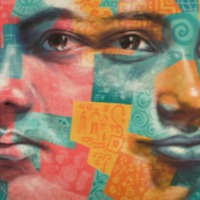
Alisha A
There are an estimated 171,000 people living in modern slavery in Nepal. Within Nepal, bonded labour exists in agriculture, brick kilns, the stone-breaking industry, and domestic work. Sex trafficking of Nepali women and girls increasingly takes place in private apartments, rented rooms, guest houses, and restaurants. Nepali and Indian children are subjected to forced labor in the country, especially in domestic work, brick kilns, and the embroidered textile, or zari, industry. Under false promises of education and work opportunities, Nepali parents give their children to brokers who instead take them to frequently unregistered children’s homes in urban locations, where they are forced to pretend to be orphans to garner donations from tourists and volunteers; some of the children are also forced to beg on the street. Alisha hoped to continue her studies but her family’s financial needs led her to take a job as a domestic worker in Kathmandu. Alisha was forced to work long hours with no breaks, had her food and movement restricted and was subjected to physical abuse by her employer.
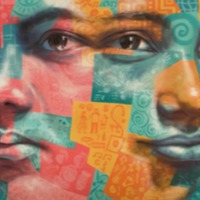
Medamani Nagamma
It is estimated that almost 8 million people are living in conditions of modern slavery in India (GSI 2018). The skewed sex ratio in some regions of India has fuelled the trafficking and selling of women and young girls as brides within India. Women are reportedly sold off into marriage by their families, sometimes at a young age, and end up enduring severe abuse, rape and exploitation by their husbands. It is also reported that women and girls from impoverished backgrounds have been lured by promises of marriage by younger men from urban areas, then forced into sex work once married. Medamani Nagamma was forced to marry at a young age. Within the marriage she was forced to do housework and raped by her husband. After a complicated pregnancy it was suggested that she undergo sterilisation.
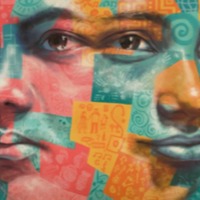
James Kofi Anan
There are an estimated 133,000 people living in modern slavery in Ghana (GSI 2018). Ghana remains a source, transit, and destination country for men, women, and children subjected to forced labor and sex trafficking. Ghanaian boys and girls are subjected to forced labor within the country in fishing, domestic service, street hawking, begging, portering, artisanal gold mining, quarrying, herding, and agriculture, including cocoa. Research focused on the fishing industry on Lake Volta indicated that more than half of the children working on and around the lake were born in other communities and many of these children are subjected to forced labor; not allowed to attend school; given inadequate housing and clothing; and are controlled by fishermen through intimidation, violence, and limiting access to food. Boys as young as five years old are forced to work in hazardous conditions, including deep diving, and many suffer waterborne infections. A study of the prevalence of child trafficking in selected communities in the Volta and Central Regions indicated that children from nearly one-third of the 1,621 households surveyed had been subjected to trafficking, primarily in fishing and domestic servitude. James Kofi Anan tells of his own experience of child trafficking for fishing on Lake Volta, Ghana. He talks about how this representative of child trafficking in the area and how he thinks people can work towards the ending of human trafficking. Kofi Anan also provides details on his own anti-child trafficking organisation Challenging Heights.
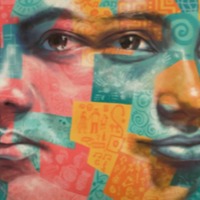
Moceica A
There are an estimated 15,000 people living in conditions of modern slavery in Australia (GSI 2018). Australia is a destination country for women from Southeast Asia, South Korea, Taiwan, the People’s Republic of China (PRC), and reportedly Eastern Europe trafficked for the purpose of commercial sexual exploitation. Some men and women from several Pacific islands, India, the PRC, South Korea, the Philippines, and Ireland are fraudulently recruited to work temporarily in Australia, but subsequently are subjected to conditions of forced labor, including confiscation of travel documents, confinement, and threats of serious harm. Some indigenous teenage girls are subjected to forced prostitution at rural truck stops. Moceica Turaga was trafficked from Fiji in 1988 at the age of 17 to work in the Australian horticultural sector. He had been promised the opportunity to continue his education and earn money to support his mother and siblings. After two years of agricultural work in Australia, he learned that none of his wages had been sent to his mother as promised. He was eventually employed by a farmer who helped him escape exploitation. He told his story for the first time in public at the Bali Process Government and Business Forum in August 2017, and again at the Catholic Archdiocese of Sydney Anti-Slavery Task Force's Ethical Sourcing Seminar and Expo in February 2019. This version of his narrative was delivered in October 2017 to members of the Joint Standing Committee on Foreign Affairs, Defence and Trade during a hearing in Mildura, Australia, about the establishment of a Modern Slavery Act in Australia. He lives today in Bundaberg, Australia, and works in the disability sector supporting children, youth and the elderly. He ran as an Independent candidate for the seat of Hinkler in the 2019 federal election.
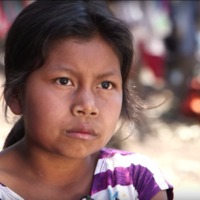
Fatima
According to the Global Slavery Index (2018) there are an estimated 47,000 people living in modern slavery in Guatemala. Guatemalan men, women, and children are exploited in forced labour within the country, often in agriculture or domestic service, and in the garment industry, and domestic service in Mexico, the United States, and other countries. Indigenous Guatemalans, including children, are particularly vulnerable to and exploited in forced labour, including in tortilla making shops. Guatemalan children are exploited in forced begging and street vending, particularly within Guatemala City and along the border with Mexico. 8-year-old Fatima has to work on a coffee farm fetching water in order to help her mother earn enough money. Fatima’s mother described how “we leave at 6 or 6:30 and we work until 3pm. She takes care of her little brother. When she’s not doing that she’s helping me work. When we finish watering coffee plants, we pick up wood. There are times when I don’t have enough. This is why I couldn’t send her to school this year. She wanted to but I just couldn’t pay for that. Fatima has never been in school. I think she would be a good student so she could learn a lot. She could go forward and support her family in the future.”
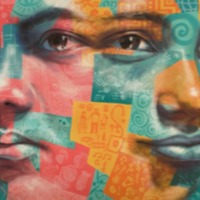
Anil
There are an estimated almost 8 million people living in modern slavery in India (GSI 2018). India has a population of more than 1.3 billion people, there are still at least 270 million people living on less than US$1.90 per day. While laws, systems and attitudes regarding key 'fault lines' such as the caste system, gender and feudalism are rapidly changing, social change of this depth and scale necessarily takes time. In this context, it is perhaps unsurprising that existing research suggests that all forms of modern slavery continue to exist in India, including intergenerational bonded labour, forced child labour, commercial sexual exploitation, forced begging, forced recruitment into nonstate armed groups and forced marriage. After his father became ill and eventually passed away, 13-year-old Anil has been working to help support his mother and four siblings.
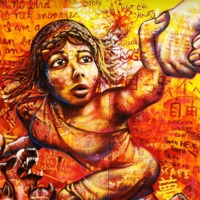
A Thousand Words
Five powerful murals against human trafficking and modern slavery are the basis of this lesson plan. The murals were created collaboratively by diverse groups and in different countries, to include university students, high school students, trafficking survivors and professional artists.There are two 55-minute lessons, depending on the level of your students, that are aimed at older teens, young adults and adults B2+ (upper intermediate to advanced)Materials include reading text about four murals, reading text about trafficking and modern slavery, student worksheet, Action Plan for collaborative project, autonomous learning resources, transcript of audio recordings, slides, Teacher’s Guide. Audio for this lesson plan can be found at https://youtu.be/h8yUtbCzPSA
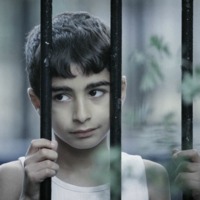
The Letter
The lesson is based around a true story about Nicu, a 9-year-old boy who has been trafficked to the UK. The central focus is a beautiful short film, based on the true narrative, in which Nicu reads an imaginary letter to his mother. Sadly, his descriptions of wealth are far removed from the reality of the violence and exploitation he is subjected to. This is not the ‘better life’ that his parents were promised he would have. He is unhappy, alone, and trapped. The lesson finishes with an engaging music video that focuses on the exploitation of a trafficked child forced to work in a factory.Audio for this lesson plan can be found at https://youtu.be/09QE3RsAge8
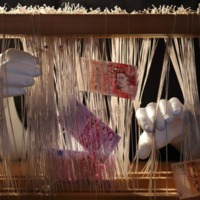
Carpet of Dreams
This lesson examines the use of forced child labour i.e. slavery, in the handmade carpet industry. The initial focus is a true life narrative told by Ravi, who was forced to weave handmade carpets for up to 14 hours a day, starved and not paid. Follow-up videos include an excerpt from the acceptance speech of Kailash Satyarthi, Nobel Peace Laureate, 2014 and an authentic TV interview with a global anti-trafficking academic, Siddharth Kara, who addresses the role of the corporate world and consumer choice. The Good News looks at powerful actions that are being taken to eliminate forced child labour. The teaching material also addresses how we, as consumers of products that may contain forced (child) labour, can use our buying power to send a message to manufacturers in order to effect change.Audio for this lesson plan can be found at https://youtu.be/XupzUpXspDg

Gold Costs More Than Money
This lesson examines the use of forced labour i.e. slavery, in gold mining. It includes a gentle but confronting narrative, a surreal short film by young filmmakers and an audio recording of an engaged couple’s argument. The teaching material also addresses how we, as consumers of products that include gold, such as smart electronics and gold jewellery, can use our buying power to send a message to manufacturers in order to effect change.There are two 55-minute lessons, depending on the level of your students, it is aimed at older teens, young adults and adults, B1+ (upper intermediate to advanced)Materials include The young man on the train (narrative), student worksheet, autonomous learning resources, audio recording, transcript, information about human trafficking and modern slavery, slides, real-life interview with a businessowner, Teacher’s Guide. Audio for this lesson plan can be found at https://youtu.be/Dv53eoT94JA

Cocoa Truth
This lesson examines the use of forced labour, including forced child labour, in the cocoa industry. The content specifically focuses on the exploitation of children in the Ivory Coast. The lesson also addresses how we, as consumers of cocoa-based products, in particular chocolate, can use our buying power to influence chocolate companies.There are two 55-minute lessons, depending on the level of your students, and is aimed at older teens, young adults and adults B1+ (upper intermediate to advanced)Materials include Peter’s story, information about slavery in the cocoa industry, real-life interview with the Director of a shelter for trafficked children, student worksheet, autonomous learning resources, slides, audio recording of Peter’s narrative, Teacher’s Guide. Audio for this lesson plan can be found at https://youtu.be/qLnUMjhZxuA

Something Doesn't Feel Right
Something Doesn't Feel Right provides lessons and resources for teaching on identifying signs of human trafficking at airports and on flights.This lesson looks at real life events where airline employees effectively identified cases of human trafficking. In all cases the airline agents had been specifically trained to identify indicators of human trafficking. The lesson content also addresses the way social media is used by traffickers to recruit victims, specifically youth. There are two 55-minute lessons, depending on the level of your students. it is aimed at older teens, young adults, adults, B2+ (upper intermediate to advanced)Materials include True narrative at airport, student worksheet, autonomous learning resources, transcripts of authentic videos, slides, information about human trafficking and modern slavery, Teacher’s Guide.

My Future Is My Choice
My Future Is My Choice provides a lesson plan and resources for teaching on forced marriage, child marriage and honour-based violence and the possible long-term consequences of these crimes. We approach this subject sensitively and gently beginning with a powerful true narrative in which child marriage is fortunately prevented. The theme is introduced through artwork, and as the content progresses students learn that this crime is closely tied to control, violence and exploitation. There are two 55-minute lessons, depending on the level of your students and is aimed at older teens, young adults, adults, B1+ (upper intermediate to advanced)Materials include Laila’s story, student worksheet, autonomous learning resources, audio recording and transcript, Shahina’s story: transcript of video narrative, information about human trafficking and modern slavery, slides, Teacher’s Guide.Audio for this lesson plan can be found at https://youtu.be/JkGirIiPGfg
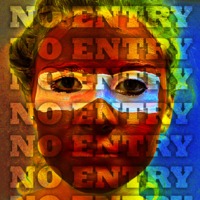
Eyes Wide Shut
Eyes Wide Shut provides a lesson plan and resources for teaching about child grooming.This lesson is about Sarah, a young girl in the UK who was groomed and exploited for seven years. The grooming began when she was aged 10, and then as a 12-year-old,Sarah became a victim of human trafficking for child commercial sexual exploitation(CCSE). The lesson title, EYES WIDE SHUT is a reference to the fact that nobodyseemed to notice – of if they did, no action was taken for several years. This is a true story.There are two 55-minute lessons, depending on the level of your students. The lessons are aimed at older teens, young adults and adults, B1+ (upper intermediate to advanced).Material's include Sarah’s story, information about the grooming process, student worksheet, autonomous learning resources, slides, audio recording, Teacher’s Guide. Audio for this lesson plan can be found at https://youtu.be/4797g8HuMow

The Truth Behind Closed Doors
'The Truth Behind Closed Doors' provides a lesson plan and resources for teaching about domestic servtiude - the exploitation and mistreatment of domestic workers, usually in private homes. Exploitation of domestic workers can happen to migrants domestic workers who have left their fmailies to earn money abroad, but also to workers in private homes in their own country of origin.The lesson plan provides two 55-minute lessons, depending on the level of your students. It is aimed at Older teens, young adults and adults, B2+ (upper intermediate to advances)Materials include: Rose’s personal narrative, student worksheet, autonomous learning resources, information about human trafficking and modern slavery, transcripts of audio recordings, slides, Teacher’s Guide Audio for this lesson plan can be found at https://youtu.be/i28Bev-_sFs
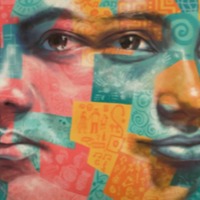
Hanan
Since the war broke out in Syria, child marriage rates have risen sharply. Before the war, child marriage did happen, but conflict has exacerbated many of the factors that push families into marrying their daughters off, such as insecurity, poverty and lack of education. In just three years from 2011 to 2014, child marriage rates increased almost threefold. Hanan is living in a refugee community in Lebanon. She receives support from Girls Not Brides member SB Overseas. SB Overseas runs education programmes to help young refugees get back into the school system. They also run educational support programmes for older children, awareness sessions and psychological support sessions for children and young people. They also teach women vocational skills so they can support themselves and their families, and distribute clothing and aid.
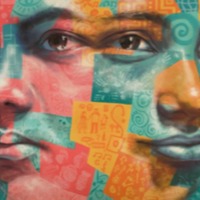
Josephine
There are an estimated 328,000 people living in conditions of slavery in Kenya (GSI 2018). Men, women and children are subjected to exploitation amounting to modern slavery in forced labour and sex trafficking. Children are often subjected to forced labour in domestic service, agriculture, fishing, cattle herding, street vending and begging. They are also victims of commercial sexual exploitation throughout the country, in khat cultivation areas, near gold mines and along the highway and Lake Victoria. Moreover, those residing in Kenya's largest refugee camp Dadaab are often vulnerable. Men and women are often lured by employment agencies offering attractive job opportunities, then find themselves trapped in domestic servitude, massage parlors and brothels or forced manual labour.To escape forced marriage, Josephine ran away from home in 2009 and found refuge at House of Hope, a home for rescued girls. She is now a trainee lawyer with an interest in human rights.